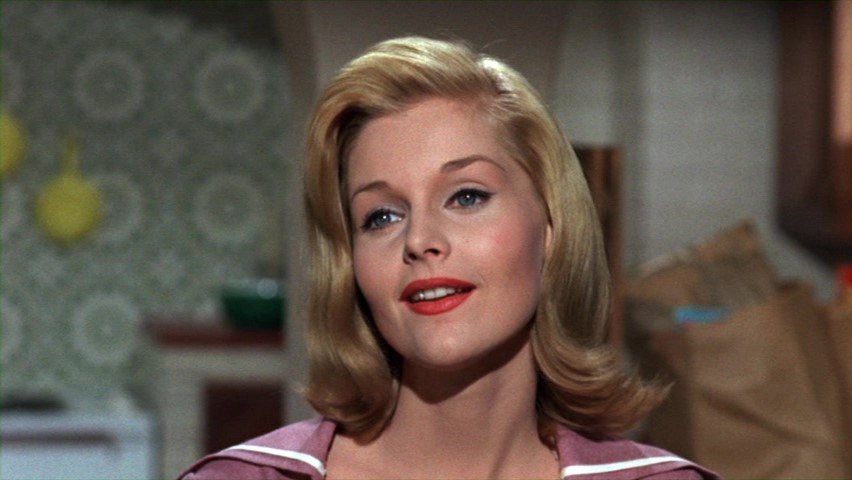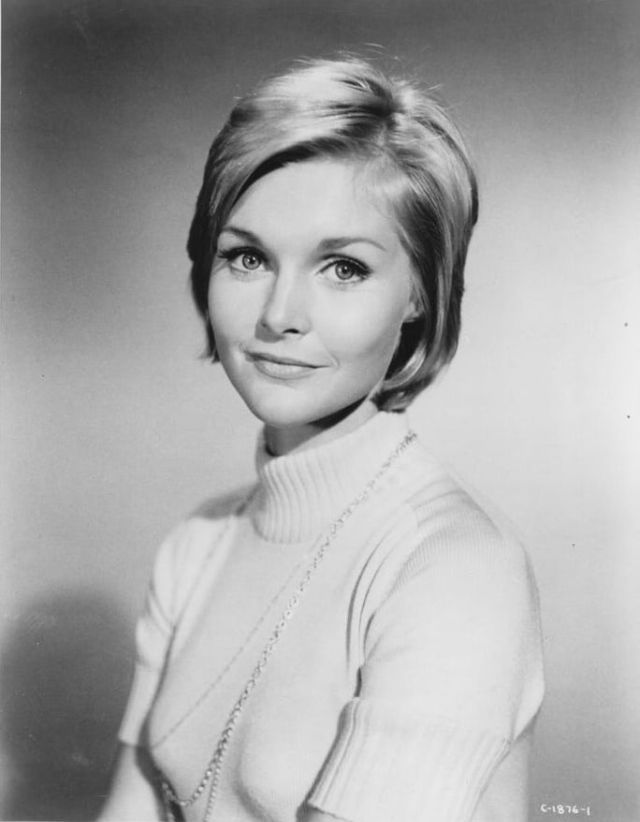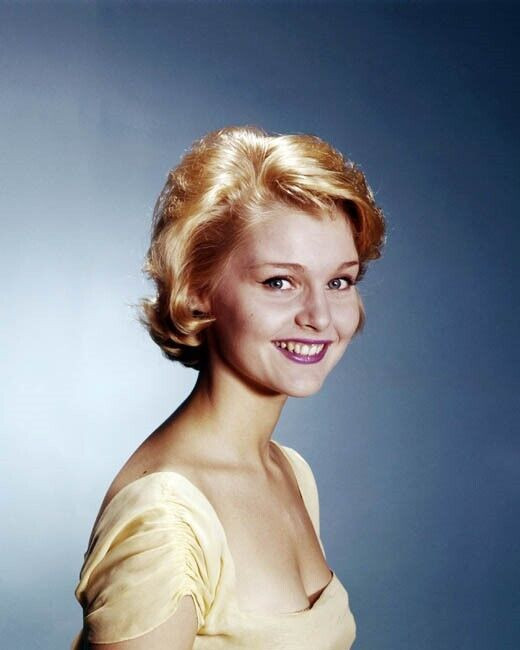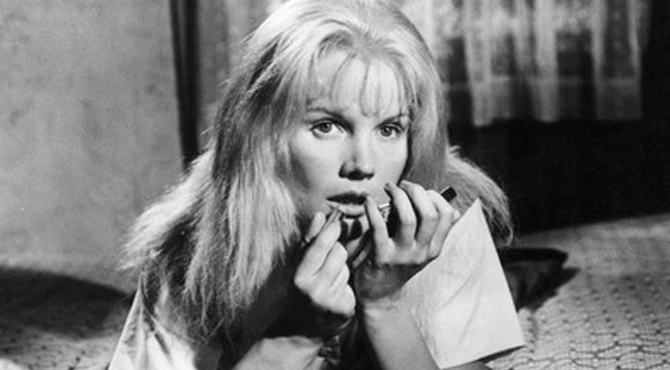Carol Lynley, who appeared on Broadway in her early teens, then became a film actress whose best-known role was as a ditsy, shrieking lounge singer in the 1972 disaster movie “The Poseidon Adventure,” which has become a cult classic, died at her home in Pacific Palisades, Calif. She was 77.
The cause was an apparent heart attack, said a friend, the actor Trent Dolan.

Ms. Lynley was a child model and actress who was featured on the cover of Life magazine in 1957, when she was only 15.
Known for her pert good looks, she soon moved to Hollywood and became a minor star in mostly minor films. She appeared in a series of lightweight sex romps, such as “Under the Yum Yum Tree” (1963) with Jack Lemmon and “The Pleasure Seekers” (1964), about the romantic adventures of three young American women in Spain.
In one of her more challenging dramatic roles, Ms. Lynley shared the screen with Laurence Olivier and Noel Coward in Otto Preminger’s 1965 psychological thriller “Bunny Lake Is Missing,” playing a young mother searching for a lost daughter.
But her most recognizable role was as a shipboard singer in the star-studded “The Poseidson Adventure.” The film was part of a series of blockbuster disaster movies in the 1970s, including “Airport,” “The Towering Inferno” and “Earthquake.”
The film takes place on New Year’s Eve, as the festivities aboard the SS Poseidon are thrown into turmoil when the ship is capsized by a 90-foot tidal wave.

Ms. Lynley is among the Poseidon passengers trying to survive the disaster, along with other cast members, including Gene Hackman, Shelley Winters, Jack Albertson, Stella Stevens, Ernest Borgnine, Red Buttons and Leslie Nielsen.
In the movie, Ms. Lynley sings the movie’s Oscar-winning theme song, “The Morning After,” although her voice was dubbed by singer Renée Armand. Dressed in a clinging orange blouse, white hot pants and go-go boots, she spends much of the film climbing through the wreckage, screaming and being drenched by water.
“It was the most physically demanding role you can possibly imagine,” she told Chicago Sun-Times film critic Roger Ebert in 1972. “We had to swim underwater, climb across tiny catwalks, walk over flames. . . . They hosed us down at least 20 times a day. And there were no safety precautions for the first two weeks of shooting. I’d be up there on a catwalk, and if I slipped, it was six stories straight down through flames to a concrete floor.”

Parts of the movie, directed by Ronald Neame, were filmed on a cruise liner, but most of it was shot on a Hollywood sound stage, inside a huge tank that took three days to fill with water. The claustrophobic setting seemed to intensify the egos and fears of the cast.
“Everybody hated something,” Ms. Lynley told The Washington Post in 1972. “I hated the heights. Red Buttons hated the water. Stella [Stevens] hated the dirt and so did Ernest Borgnine. Shelley Winters hated being fat and Jack Albertson hated Shelley Winters.”
Carol Ann Jones was born Feb. 13, 1942, in New York City. Her parents divorced when she was a toddler, and her mother worked as a waitress. Ms. Lynley became a child model, under the name Carolyn Lee, and by age 10 was her family’s primary breadwinner.
(She later took the name Carol Lynley because another actress had the name Carolyn Lee.)

Shortly before her 15th birthday, Ms. Lynley was appearing on Broadway in Graham Greene’s “The Potting Shed” and soon thereafter was featured in Life magazine. During the day, she had dance lessons and up to five modeling assignments before going to the theater at night.
“Her career leaves her no time for school or social life,” the article noted. (She had a private tutor.)
“To fend off threatening ounces, she limits herself to a Spartan two meals a day: tea and grapes for breakfast, steak or fish, ice cream and more grapes for dinner.”
In 1958, Ms. Lynley appeared on Broadway in “Blue Denim,” a play by James Leo Herlihy and William Noble in which she portrayed a teenage girl who becomes pregnant and is considering an abortion. A year later, in a film adaptation of the play, her performance was described as “tender and poignant” by New York Times critic Bosley Crowther.
She was considered a rising star in Hollywood, but other than “Bunny Lake Is Missing” and “The Cardinal,” a 1963 religious drama also directed by Preminger, her film roles were often forgettable. In 1961, she was in “Return to Peyton Place,” a film “so awful,” Post critic Richard L. Coe wrote, “I can’t decide whether to laugh or cry.”
Ms. Lynley appeared in dozens of television shows, including “The Man From U.N.C.L.E.,” “Run for Your Life” and “Fantasy Island,” and she posed nude for Playboy magazine in 1965. She also continued to work in the theater, including a 1975 production of John Steinbeck’s “Of Mice and Men” at the Kennedy Center.
Her only marriage, to the publicist Michael Selsman, ended in divorce. Survivors include a daughter, the writer and filmmaker Jill Selsman of New York. Ms. Lynley later had a long relationship with the talk-show host David Frost.
“I think marriage limits a woman’s growth,” Ms. Lynley told The Post in 1972. “I’m willing to live with a man, but I’m not interested in all the paperwork that goes with matrimony and divorce.”
Ms. Lynley was gratified but puzzled by the continued popularity of “The Poseidon Adventure,” which inspired a devoted cult following. She and other cast members sometimes appeared at gatherings of the film’s fans, many of whom memorized the dialogue, made tribute (and spoof) videos or constructed elaborate models of the doomed ship.
“The movie has a life of its own,” she said.
“I went through 10 or 15 pairs of shorts because they kept shrinking,” she told the New York Times about the making of the film. “At the end of it, we had the choice of taking our costumes home. But after three and a half months, you don’t want them.”
She came to regret her decision: “I could sell them on eBay for a fortune.”










